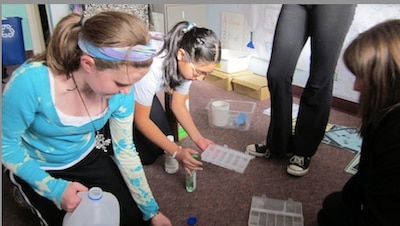Q: I’m considering a STEM school for my child, but I’m not sure what to look for or how to compare schools. Can you help?

A: With STEM schools popping up everywhere these days, this is a timely question. First, it’s important to understand that while STEM stands for science, technology, engineering and math, STEM schools vary widely in their focus and approach.
“The unique thing about STEM is it can mean lots of different things to different people,” said Heidi Ringer, principal of Skyline High School in Longmont. “It’s not standard.”
At Skyline’s STEM Academy, which began in 2009, the focus is on engineering, with classes on assistive technology, creative engineering and biomedical robotics, to name a few. The school’s partnership with the University of Colorado’s Department of Engineering means that Ph.D. students help create and deliver engineering curriculum to Skyline students.
Ringer and other experts say it’s critical for parents to visit a prospective school and ask questions about what STEM means at that school and how the educational experience there is distinct.
More specifically, parents should ask about the impetus for becoming a STEM school, the principal’s background in STEM and the school’s vision, mission and strategic plan. It may be useful to ask about the school’s test scores in math and science as well.
Penny Eucker, executive director of STEM School and Academy in Highlands Ranch, said it’s also important to ask what kind of professional development teachers receive to prepare them for STEM instruction and whether they have any special certifications. She said “Project Lead the Way,” a provider of teacher training and curriculum, and its middle-school program “Gateway to Technology” are a couple well-regarded names in the field.
But big names aren’t the only yardstick. Ringer noted that even “district-provided training on STEM could be great.”
In addition to professional development, experts suggest asking about the school’s STEM curriculum.
“I would definitely ask, ‘What is the five-year plan for the curriculum? Who are you using as the guide for that?’” said Ringer.
Eucker suggested asking how many minutes of science instruction students get each week and what that looks like at each grade level. She said the national average for science instruction is around 220 minutes a week for grades K-5.
Aside from finding out the source and quantity of instruction in STEM subjects, it’s also important to find out how curriculum trickles down to the classroom experience. For example, do teachers frequently use project-based or inquiry-based learning? Is learning described as student-directed versus teacher-directed? Do students get lots of hands-on experiences and work together as part of teams?
These attributes are often hallmarks of STEM education, helping to foster the critical thinking, creativity and collaboration valued in the STEM work place.
Students, Ringer said, need to be “actively engaged in designing and creating.”
Access to technology is another key aspect of many STEM programs and experts recommend that parents ask about more than just the number of computers or tablets at the school. It’s equally important to find out how students use technology and how it’s integrated into the curriculum.
For example, Eucker discussed how some of her students used technology for a social studies project in which they recreated the dynamics of the Cold War on the moon using Google Moon.
In addition to looking carefully at STEM subjects at prospective schools, it’s a good idea to ask about non-STEM disciplines. For example, ask to see a teacher’s reading list for the grade level in question. Eucker also recommends asking to see samples of student work representing the low end and high end of the spectrum in subjects like writing. She said looking at actual work products can help parents understand how their children will be expected to progress over the course of a school year.
While experts say STEM schools can have rich arts and language programming, it’s a good idea to ask if there’s anything students give up in order to have extensive STEM opportunities. Ultimately, touring STEM schools and asking lots of questions is the bottom line when it comes to determining the best fit for a student.
“The biggest thing…is for parents and students to really understand what STEM means for that school,” said Ringer. “It’s easy to say you’re a STEM school. It’s harder to make your school unique.”
About our First Person series:
First Person is where Chalkbeat features personal essays by educators, students, parents, and others trying to improve public education. Read our submission guidelines here.
